Meme coins: what are they and how to earn on them?
Meme coins have become a noticeable part of the digital market in recent years. They are often seen as unserious projects or financial "bubbles," but among them are several notable representatives:
- Dogecoin (DOGE);
- Shiba Inu (SHIB);
- Pepe (PEPE).
Today, we will discuss why meme coins are popular, how they influence the market, and whether it’s possible to make money on them.
What are meme coins?
Meme coins are digital currencies created based on popular jokes, memes, and internet trends. Unlike well-known cryptocurrencies like Bitcoin (BTC) or Ethereum (ETH), meme cryptocurrencies rarely have technological advantages or practical utility. Their popularity largely depends on internet attention and community activity. Additionally, meme coins are usually lacking the “burning” function, where cryptocurrencies are taken out of circulation. This leads to a constant increase in token supply and inflation. Despite the hype surrounding several successful coins, most of them eventually disappear.
According to Coingecko, the current market capitalization of meme coins exceeds $120 billion, with a daily trading volume of over $18 billion.
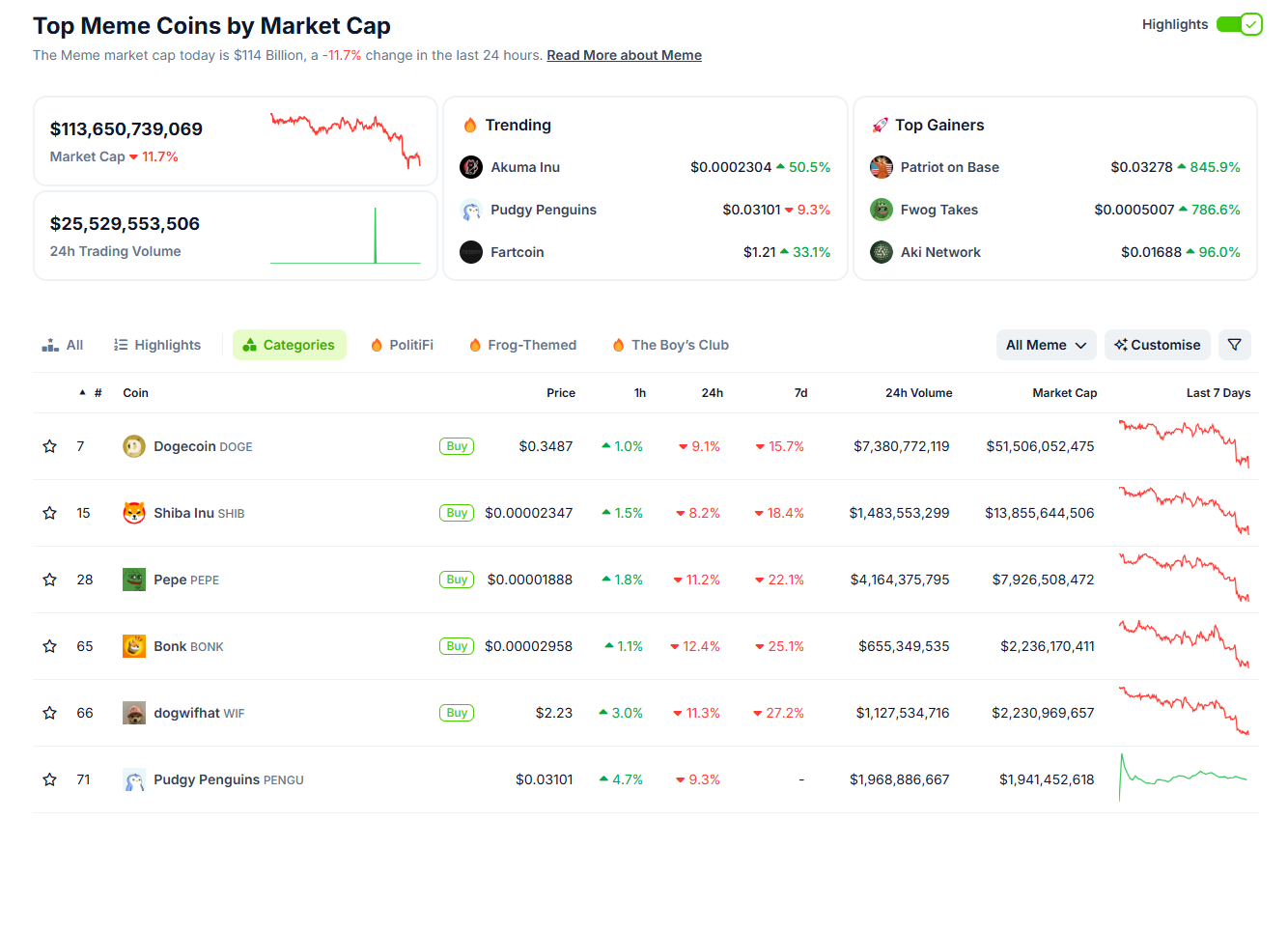
Key features of meme coins:
- Low entry threshold: Most meme coins are sold at very low prices, allowing investors, even with the smallest capital, to purchase millions of tokens.
- Social media influence: Memes and their active promotion on the internet help instantly draw attention to such crypto projects.
- Volatility risks: The price of meme coins can rise rapidly, but can also drop sharply, making them highly speculative assets with unpredictable consequences for investors.
Impact of Meme Coins on the Crypto Market
Despite the unserious nature of meme coins, these cryptocurrencies can have a significant impact on the market.
- Increased interest and adoption: Meme coins generally attract the attention of a broad audience, especially those distant from the crypto market. For example, Dogecoin’s success in 2021, when Elon Musk actively promoted the coin on his Twitter, led to a surge in interest in cryptocurrencies.
- Liquidity growth: At the height of their popularity and due to rapid price increases, meme coins can form massive trading volumes. For example, in 2021, SHIB’s trading volume reached $10 billion per day. Such high activity is always beneficial for cryptocurrency exchanges and traders looking for new profit opportunities.
- Market trends: Meme coins can often serve as indicators of market sentiment, and their rapid growth is typically accompanied by periods of "bull markets" and increased speculation.
Examples of Successful Meme Coins
Despite their entertainment-focused nature, meme coins have managed to achieve impressive results in the cryptocurrency market. Let’s consider two of the most prominent examples — Dogecoin and Shiba Inu, which turned a joke into a multi-billion-dollar business.
Dogecoin (DOGE)
Dogecoin is the first and most popular meme token. It was developed in 2013 as a parody of Bitcoin, with the symbol of DOGE being the popular dog “Kabosu” from a viral internet meme.
The market capitalization of DOGE at its peak reached $90 billion (May 2021).
Factors for success: Celebrity support, media influencers (including Elon Musk), increased community interest, and active use for donations on the Reddit platform.
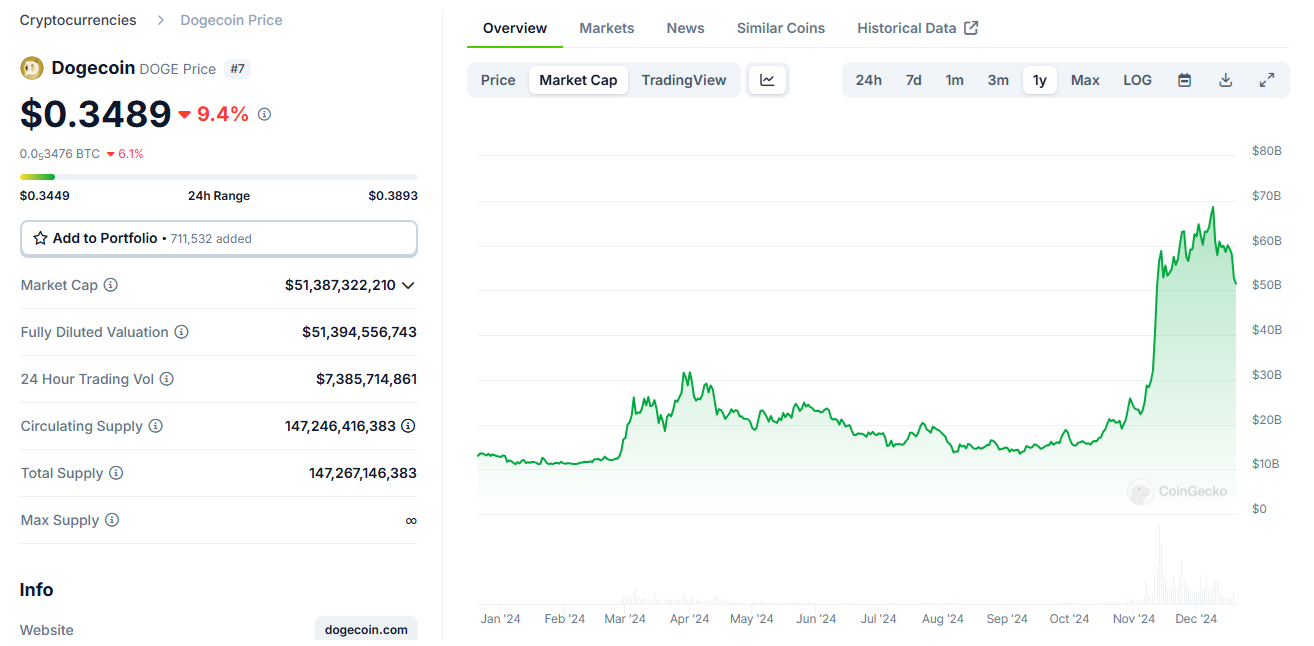
DOGE remains the "gold standard" among meme coins and holds leading positions in the market.
Current market capitalization of DOGE exceeds $56 billion, with a daily trading volume of over $4 billion.
Shiba Inu (SHIB)
The SHIB token was launched in 2020 as the “Dogecoin killer” based on Ethereum (ERC-20). The project quickly gained popularity due to active community support on social media and listings on major exchanges.
Peak growth: In October 2021, SHIB’s price reached its all-time high (ATH) of $0.00008845; Market capitalization at that time: over $40 billion.
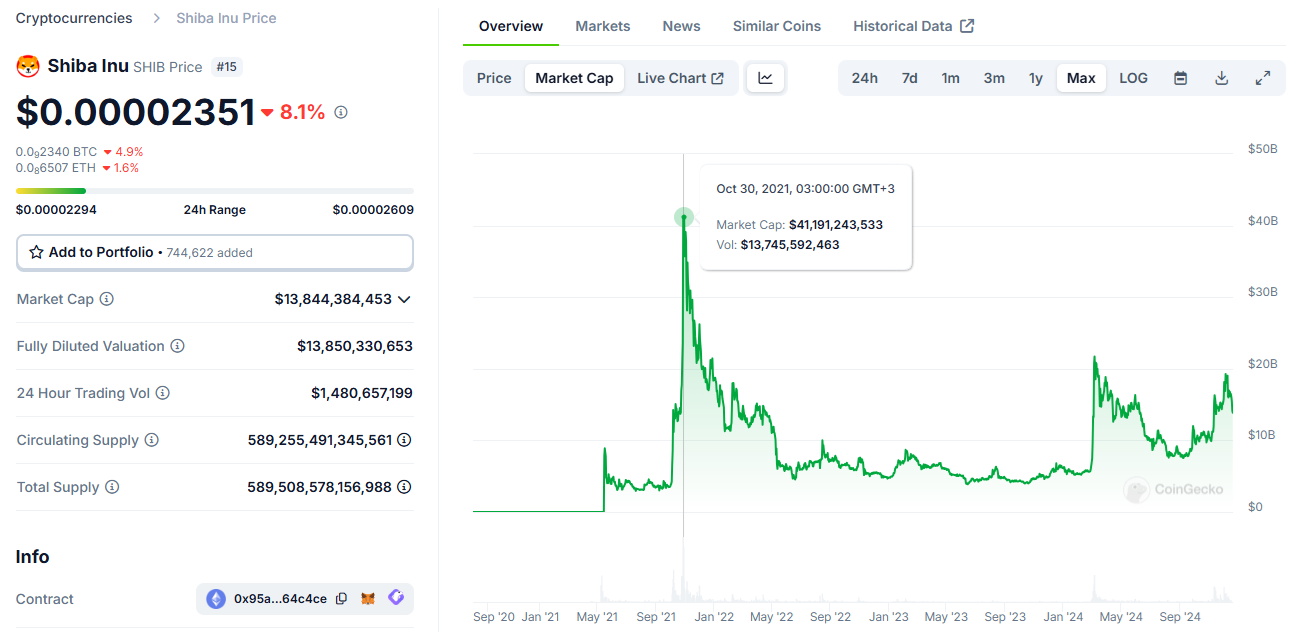
SHIB’s success was driven by "hype" and a strategy focused on mass investor attraction.
Currently, SHIBA Inu is a large ecosystem, including:
- Second-layer blockchain (Shibarium);
- ShibDAO;
- Internal token LEASH;
- Governance token BONE;
- NFT token BUBBLE;
- IO NFT token (collectible);
- Decentralized exchange (DEX) ShibaSwap.
Current market capitalization of SHIB stands at $15 billion, with a daily trading volume of over $700 million. The token holds second place in the overall meme coin rankings.
Pepe (PEPE)
PEPE is a relatively new meme coin inspired by the famous internet meme Pepe the Frog. Launched in 2023, PEPE became one of the most discussed tokens of the year.
Just one day after launch, PEPE's price surged by 900%.
Factor for success: Perfect timing with the trend and active community support from traders.
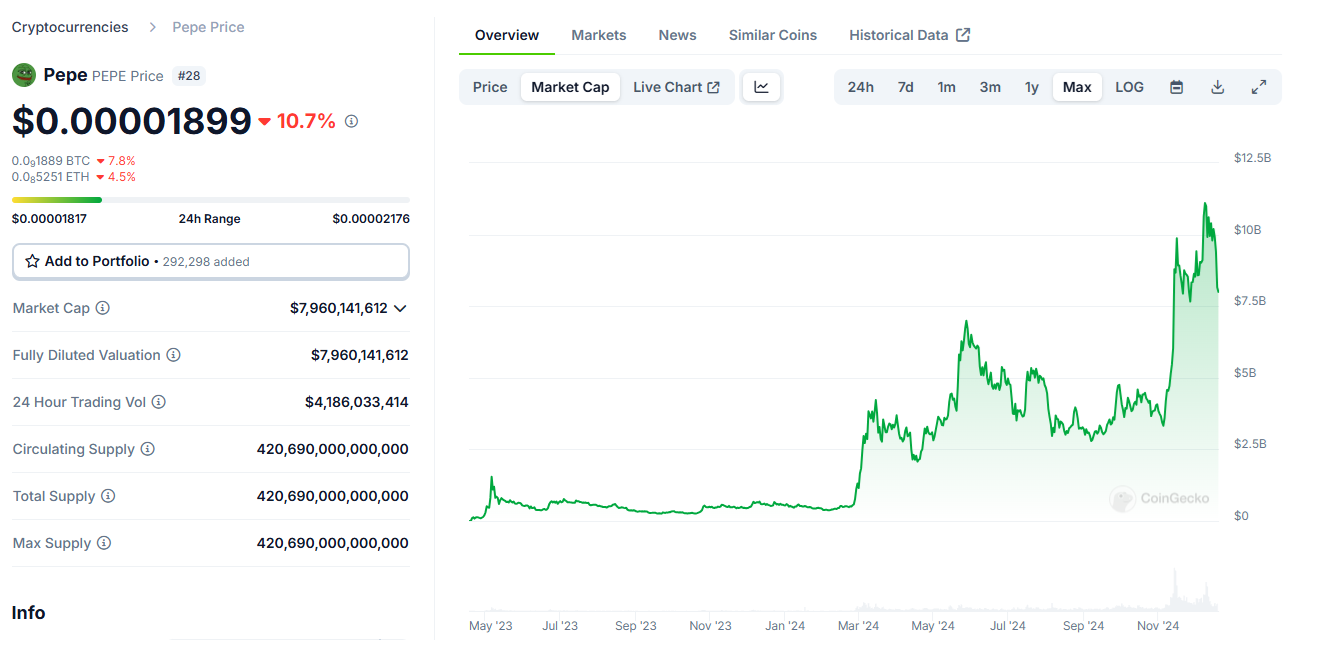
PEPE has shown that meme coins remain tools for extremely quick speculative profits. Currently, many large investors continue to hold millions of dollars in PEPE. Some early holders of PEPE, who invested just $27, are now making tens of millions of dollars.
Current market capitalization of PEPE is $8 billion, with a daily trading volume of over $2 billion. Since the beginning of 2024, the PEPE token has shown a growth of over 2000%.
Current Position of Meme Coins in the Market
According to Binance Research, since 2022, the total capitalization of the meme coin segment has grown from 4% to 11%.
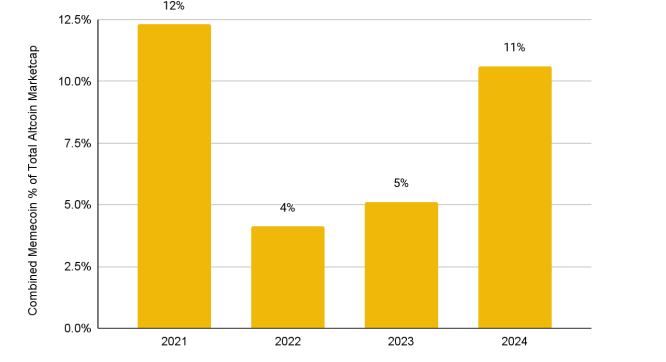
DOGE, SHIB, and PEPE dominate, accounting for more than 90% of the total meme coin volume. Meanwhile, meme cryptocurrencies remain among the most volatile, creating both opportunities for profit and risks of losing funds.
Meme Coins: A Bubble or a Tool for Profit?
Meme coins like Dogecoin, Shiba Inu, and PEPE attract investor attention due to their ability to rapidly rise in price. However, one must ask: are they a serious financial instrument or just a temporary phenomenon? This question sparks heated debates among crypto enthusiasts and experts. Some see them as another bubble, while others view them as an opportunity to earn with minimal investment. Let's break down the main arguments for and against meme coins to better understand their nature.
Arguments Against Meme Coins:
- Lack of technological value: Most meme coins do not offer unique solutions and have no long-term benefits.
- Speculation: Price growth is often driven by "hype" and short-term trader interest.
- Risks for investors: Due to high volatility, investors can lose significant amounts of money.
Arguments For Meme Coins:
- Low entry threshold: Meme coins allow investors with small budgets to achieve significant profits.
- Community and marketing: Active communities and influencers can pump the token’s price to incredible levels.
- Success stories: SHIB and PEPE demonstrate that meme coins can yield thousands of percent in returns.
Conclusion
Meme coins are controversial instruments in the cryptocurrency market. While they are often criticized for lacking fundamental value, their ability to attract significant attention and bring huge profits makes them appealing to investors. For some, meme coins are a financial "bubble" that will eventually burst. For others, they are a tool for profit, based on the ability to spot trends and quickly react to market movements.

